I recently visited an old friend – the filter beds at Seething Wells, as I hadn’t been for a while. I was shocked with what I found. They’ve drained most of the beds, and almost completely denuded the site of any greenery or nature, although that’s been an on-going process. Coming up to the local elections the Seething Wells beds are a hot-button subject here along with the Kingfisher Leisure centre. The site has been empty for decades, and nature moved in – there even used to be trees growing in the beds if I recall correctly? Nature always finds a way with these edgelands.
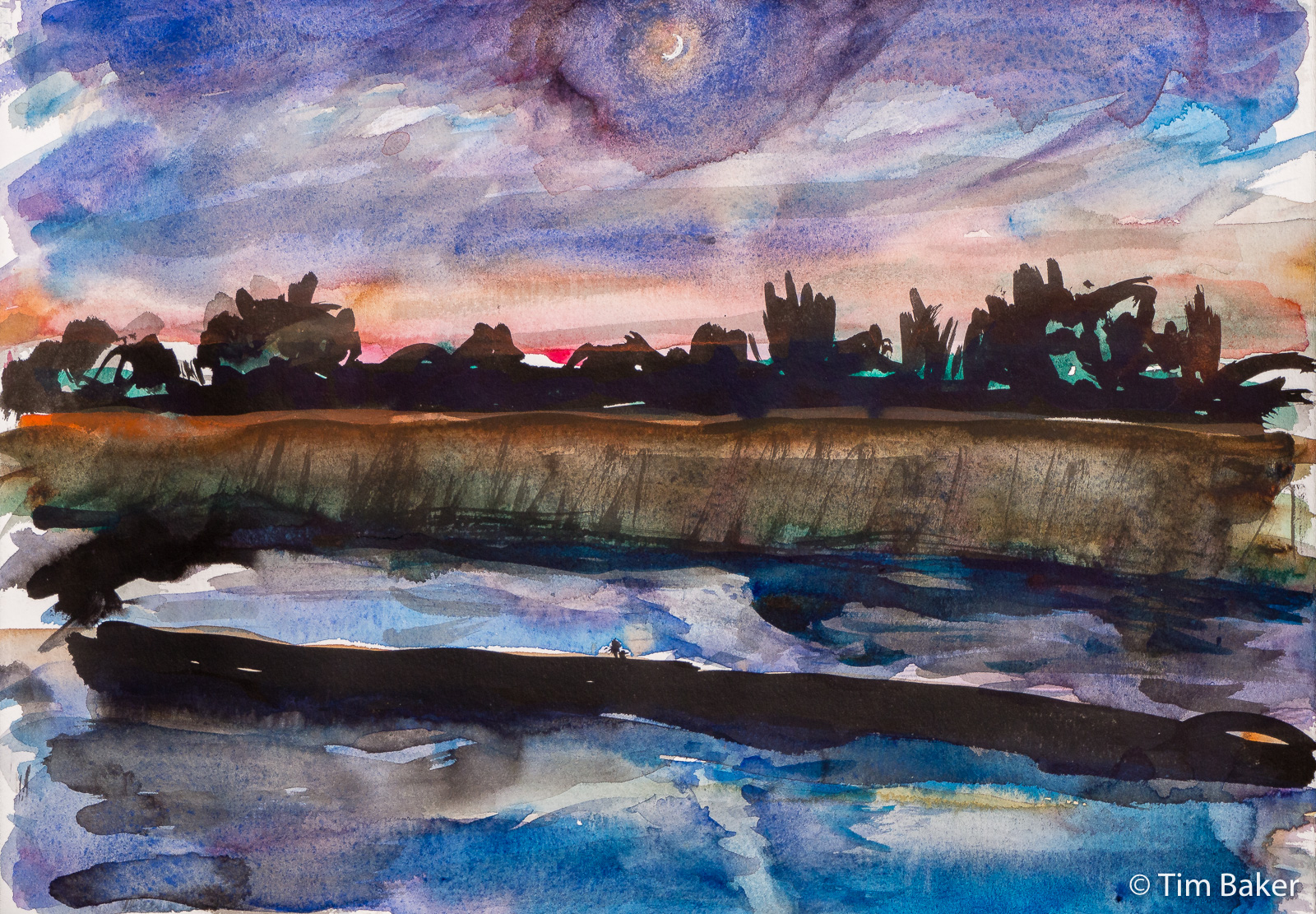
But without planning, it’s curious what the owner is trying to do with this ‘scorched earth’ policy – I expect make it such a post-industrial eyesore that it ‘has’ to be developed – the problem being is it was fine as it was – why do we need to build on every inch of land in London? There even is an action group – SWAG (Seething Wells Action Group) putting up posters and trying to get the space preserved. Seeing it intentionally destroyed like this is depressing.
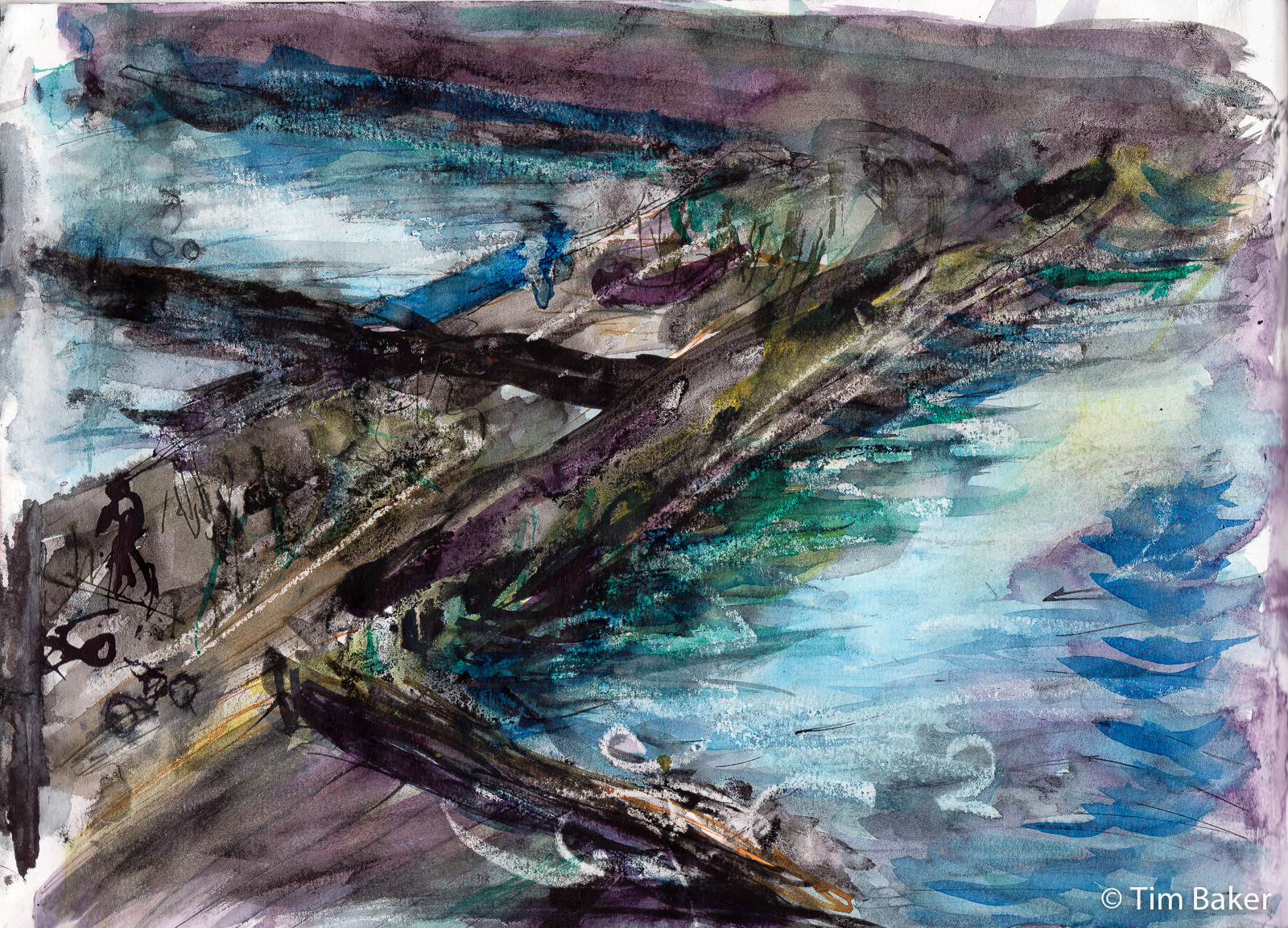
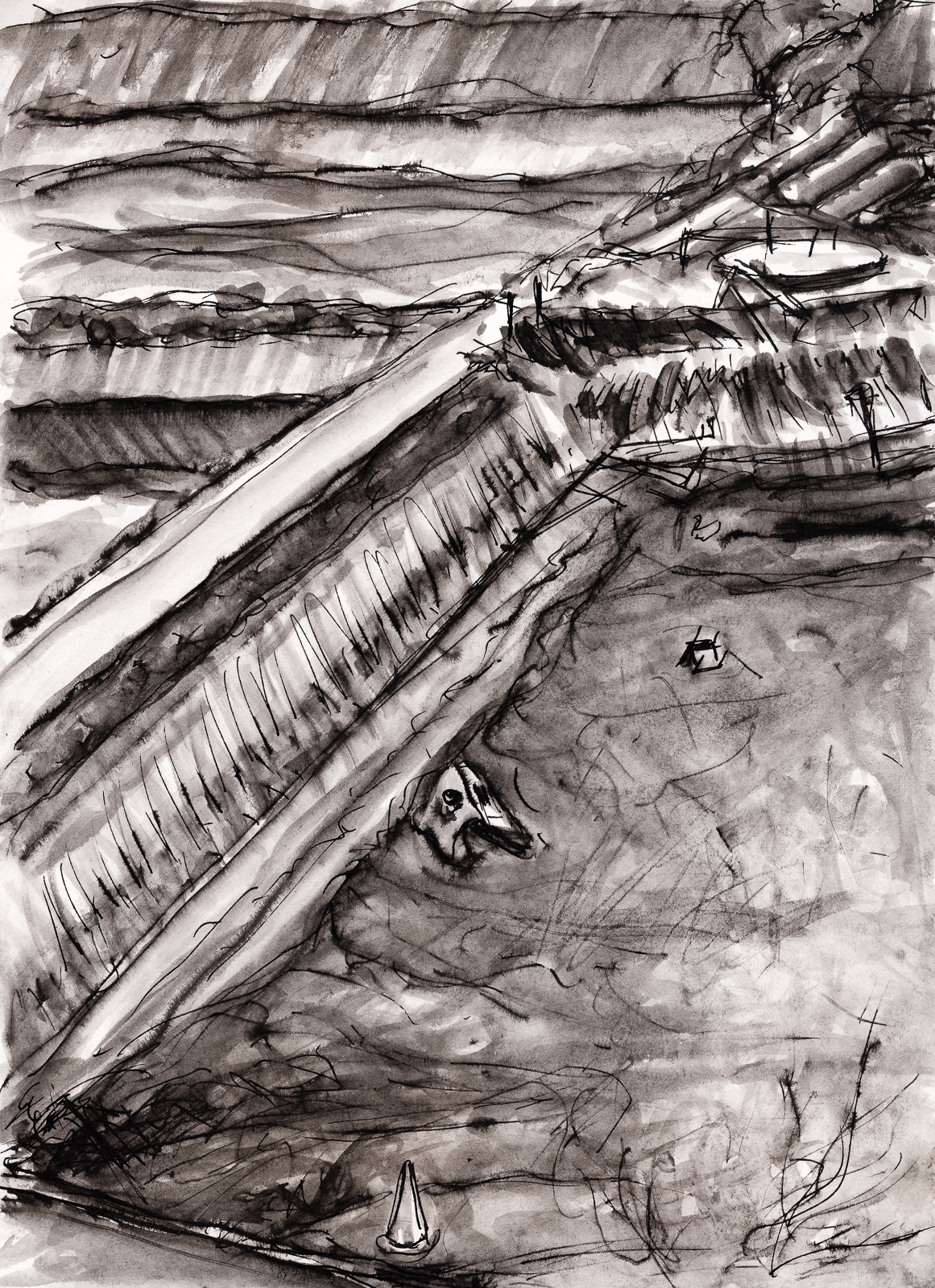
I drew ‘Beached Whales’ – after the white bleached stranded objects such as the traffic cone and chair left in the drained bed – last night, as well as ‘Unbolted’ – a sequel to my Bolt watercolour but it felt like a sort of wake, a documenting the end of the beds. I hope that isn’t true – but it does seem some locally would rather some horrible flats like the ones going up all over Kingston rather than a historic natural space that’s been there for over a hundred years – the waterworks opened in 1850’s to give London clean water to fight the cholera epidemic.
They were part of John Snow‘s legendary scientific proof showing how dirty water spread cholera and that less people died drinking water from Seething Wells. Such locals don’t seem to care about such history (and I question whether they are actually locals at all – the difference between actual local reaction to my campaign to stop a house built behind us vs. social media was interesting. No-one here wanted that house, and it was the total opposite online, I got called NIMBY and worse. Again why do we need to build on every empty plot?).
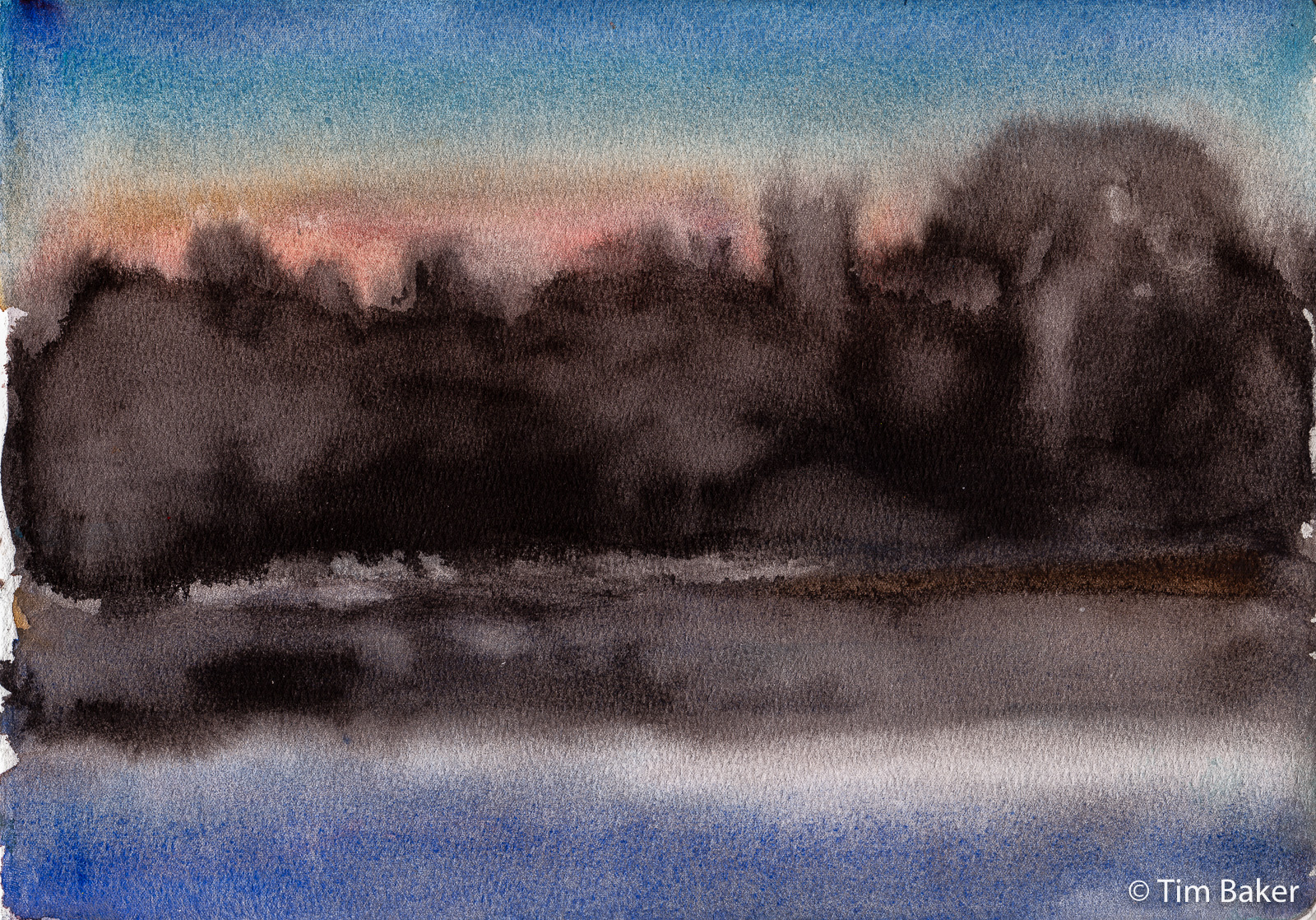
Seething Wells filter beds were beautiful as they were, and I am surprised locals think of it as some blight – probably thinking of their own property prices I guess. But who needs another Sainsbury’s or marina or safety deposit boxes in the sky rented out at astronomic prices on AirBnB? We already have all of those here, including what’s left of the other part of the beds (Thames Ditton marina). Partly the reason why it currently looks a mess is this destruction – for instance the listed walls and fences are falling down is the current owner refuses to repair them.
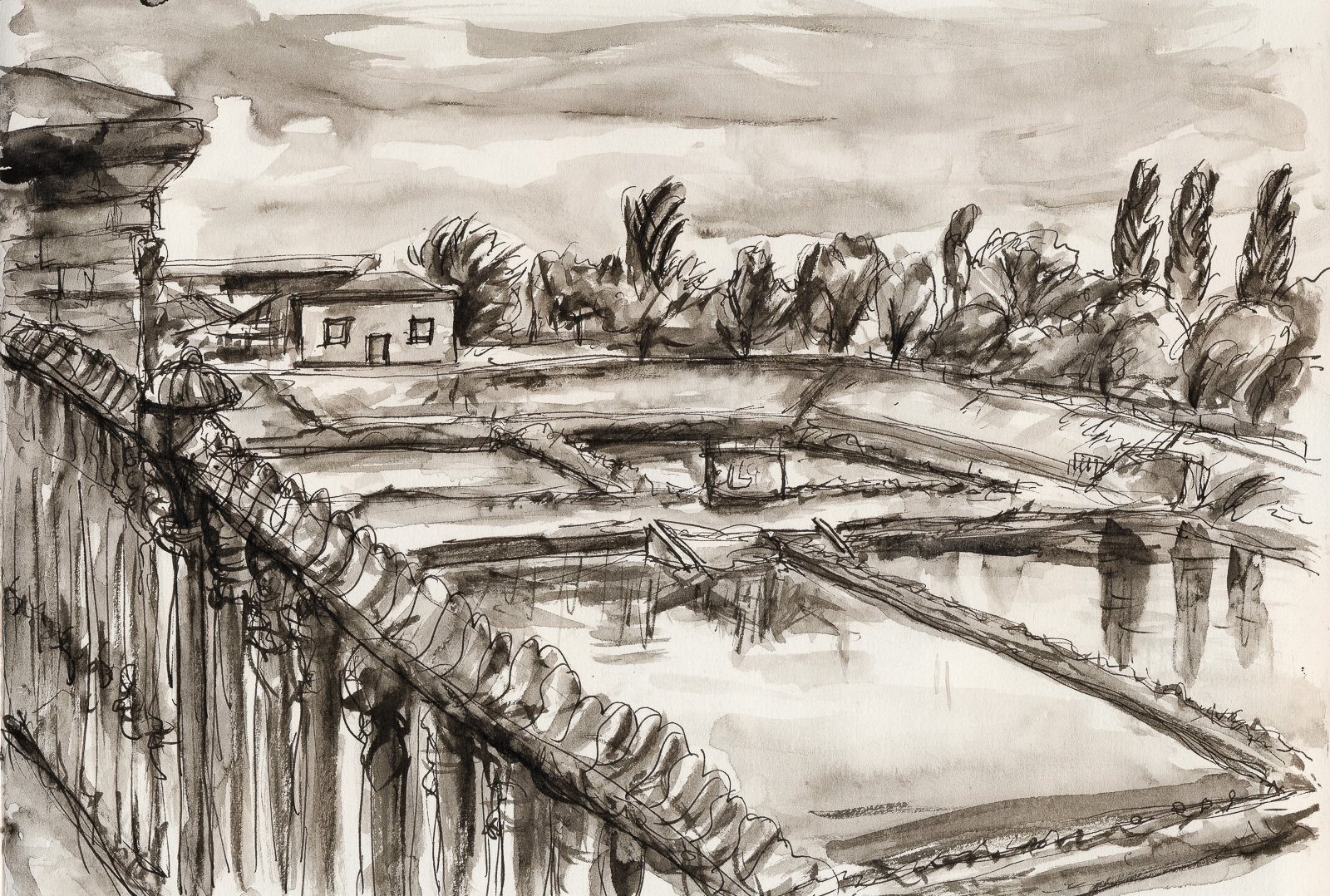
Now since I have been documenting the space since 2019, you can see in stark contrast how the site has changed in my drawings and paintings – even as recent as last September. Bolt vs Unbolted shows this starkest, there is water in the beds, greenery growing everywhere, it’s not been reduced to a litter full empty space.
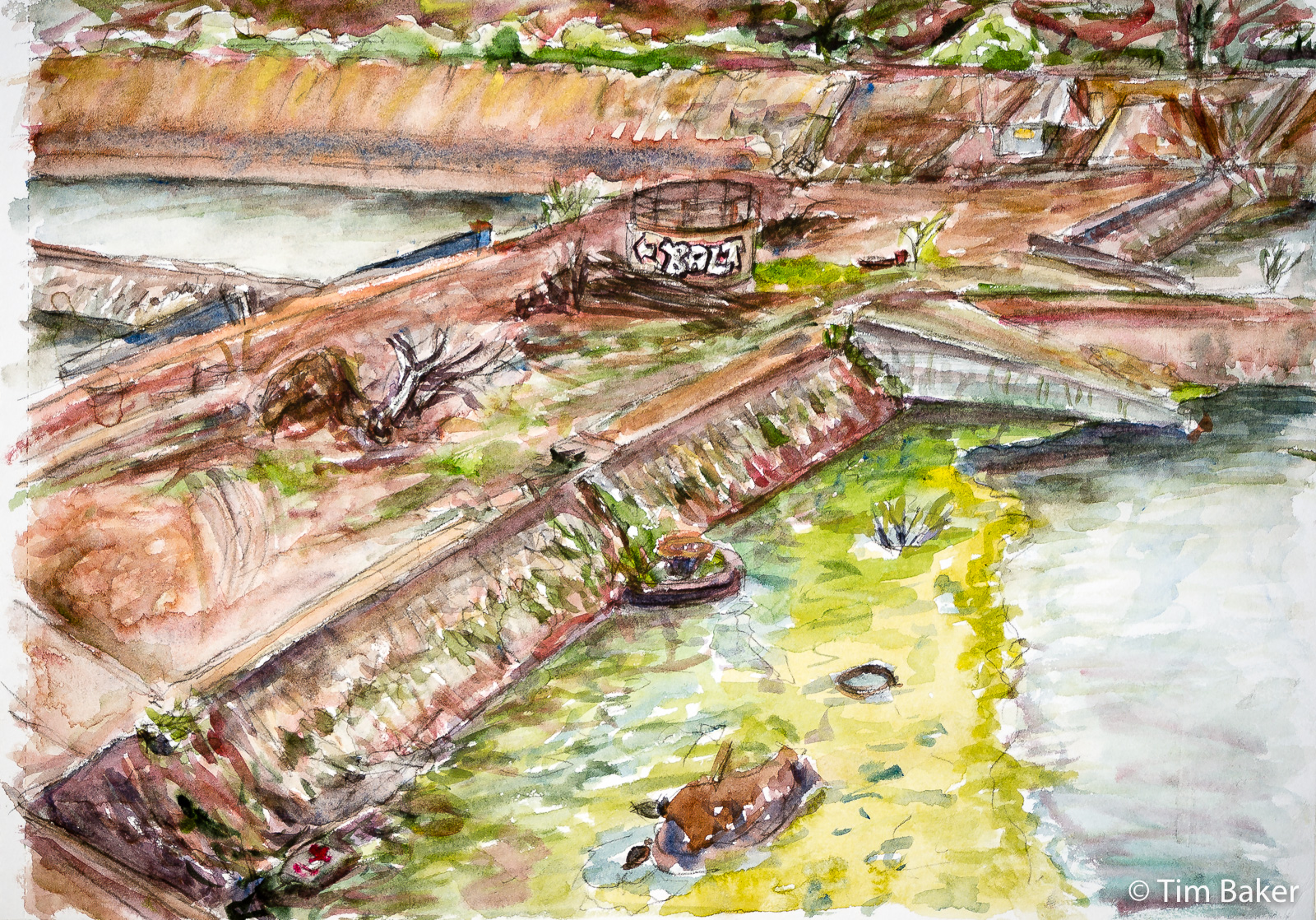
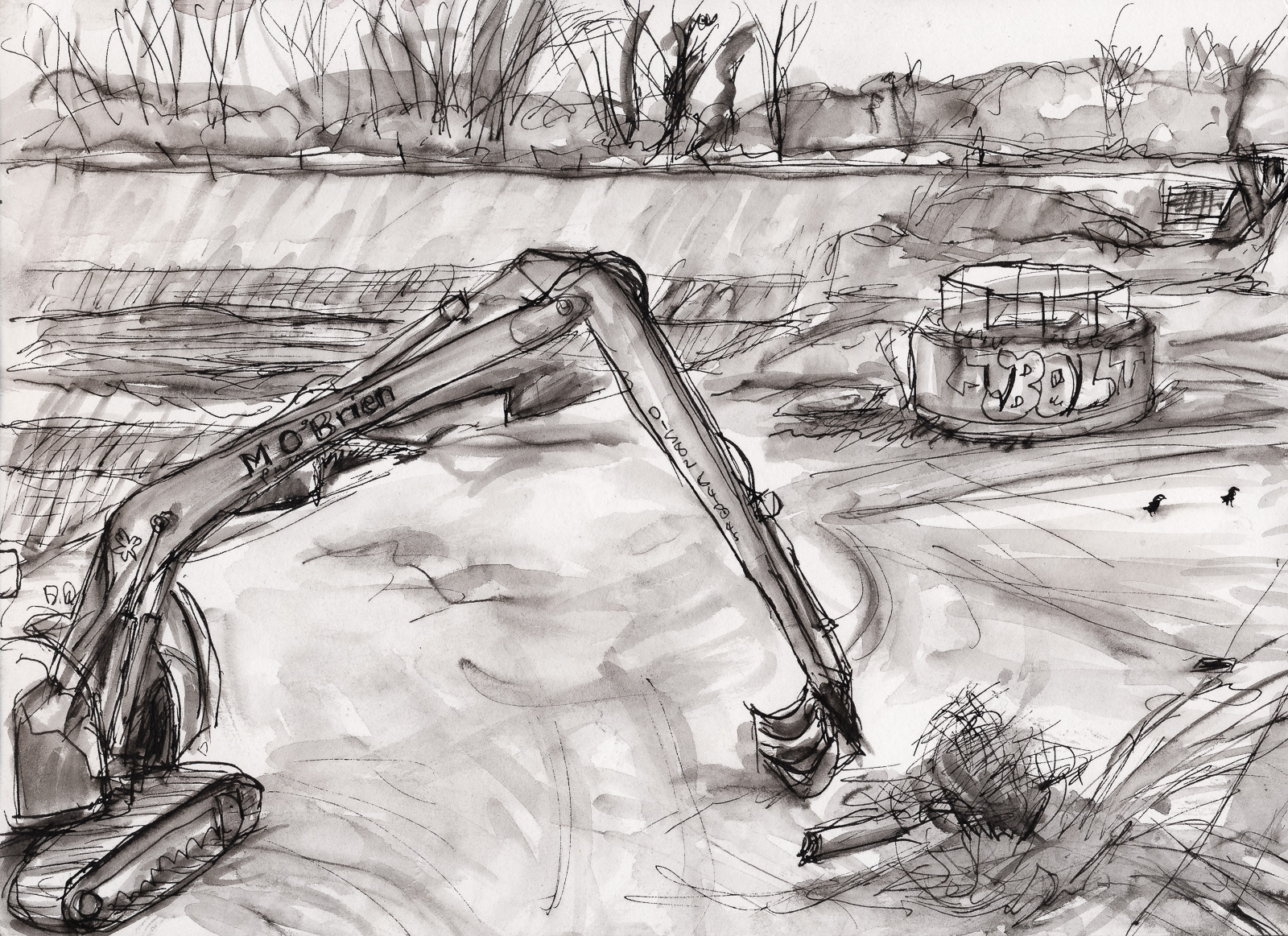
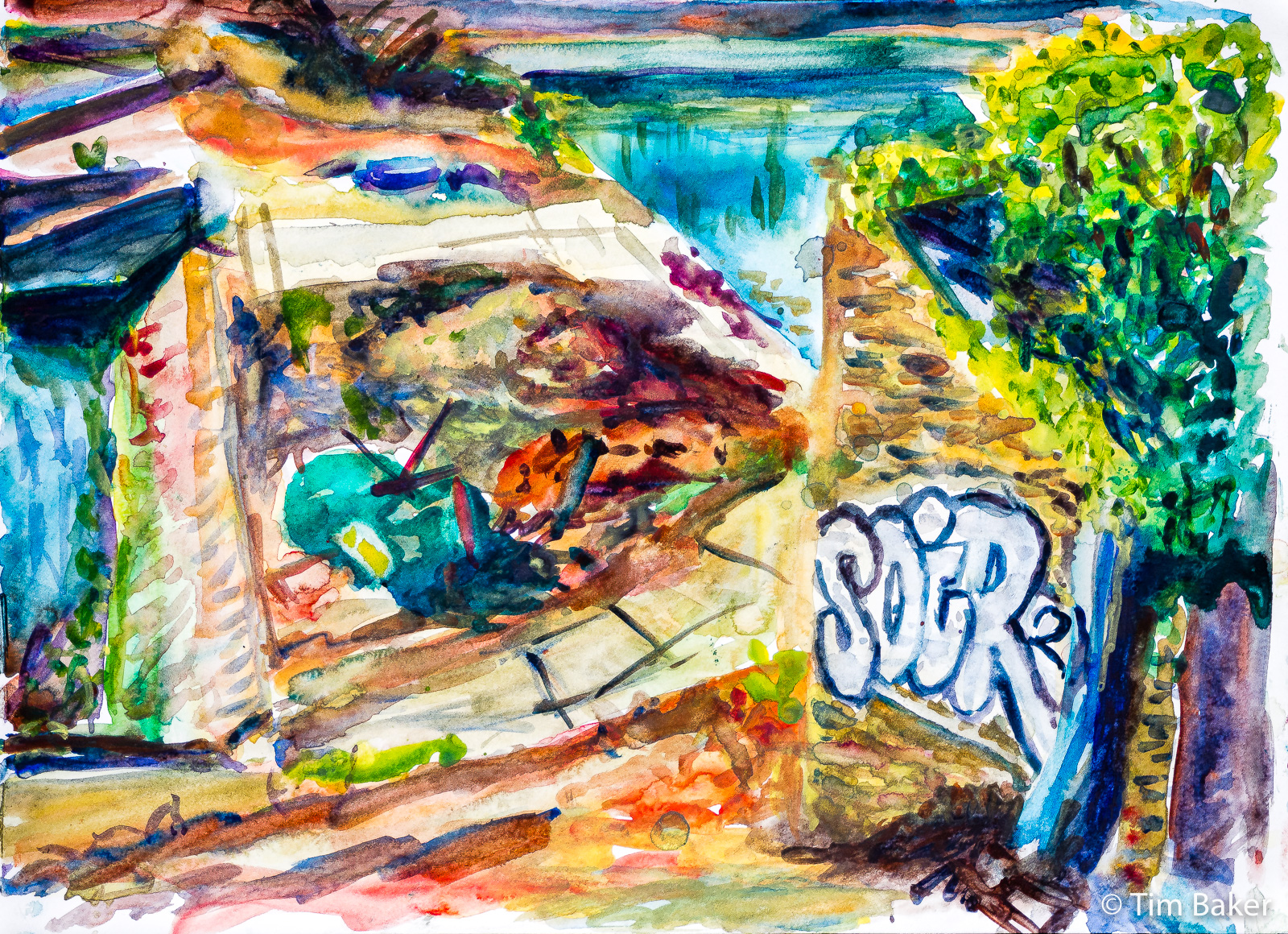
You can also see that from my SOIR2 – those trees growing in the building and ivy have all been removed – sure some of the rubble and mess, but weirdly nearly all the protective fences around the beds have also been removed. Even the goats seem to have gone.
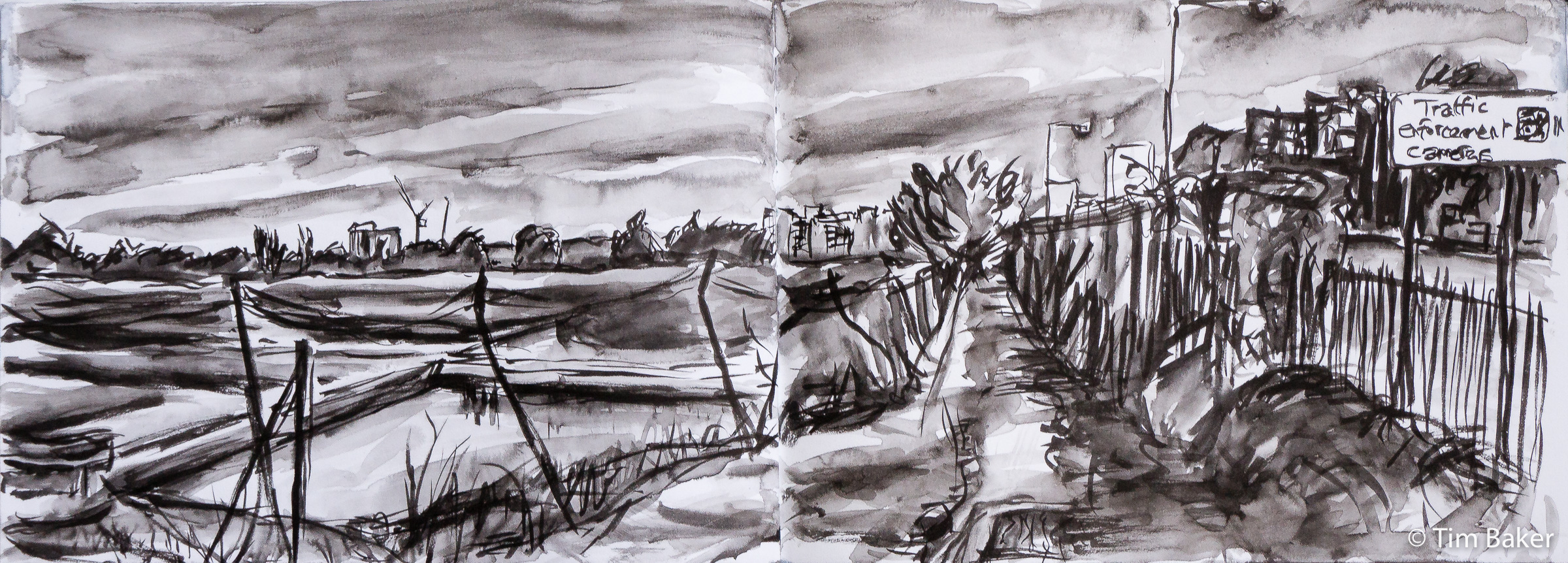
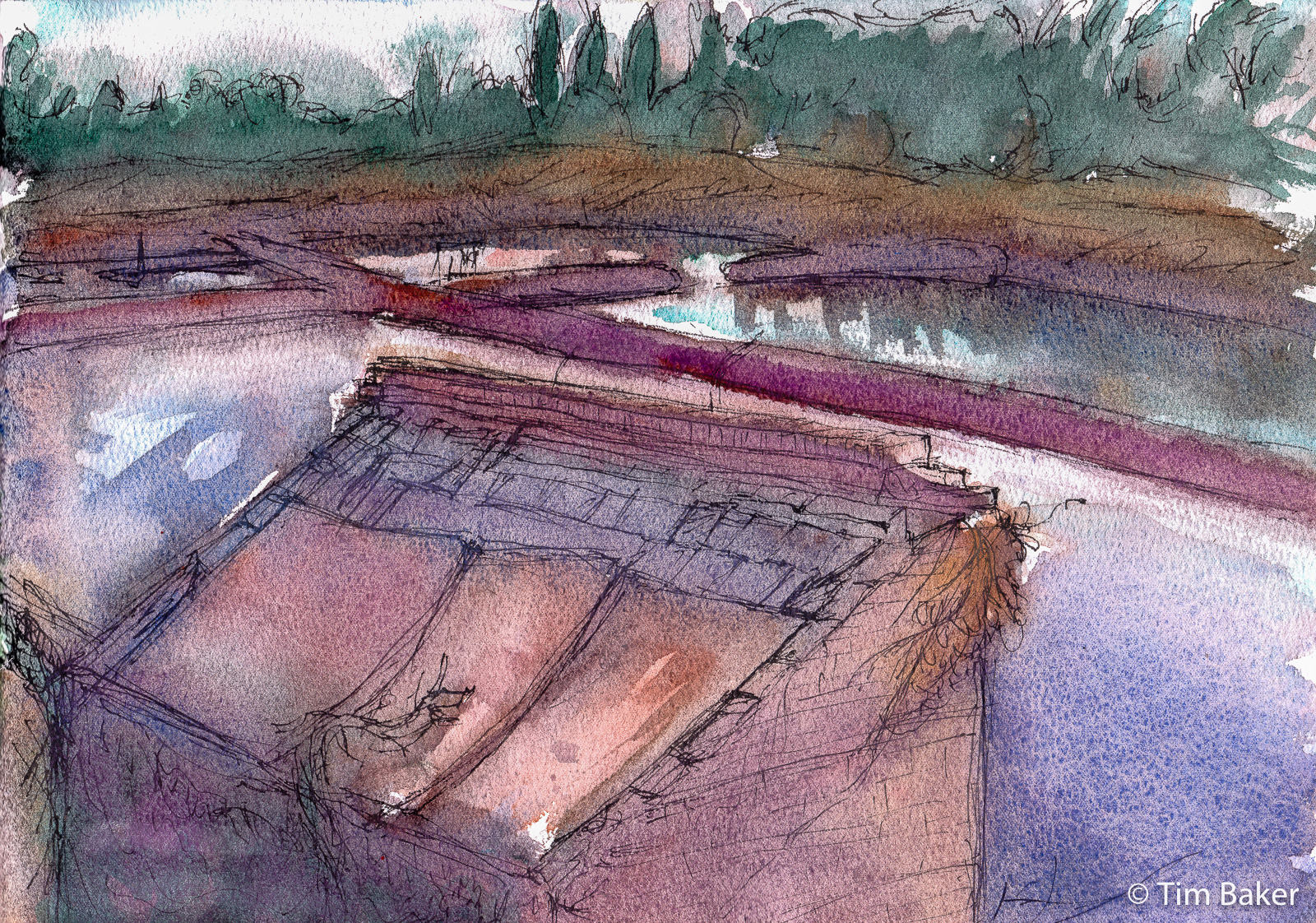
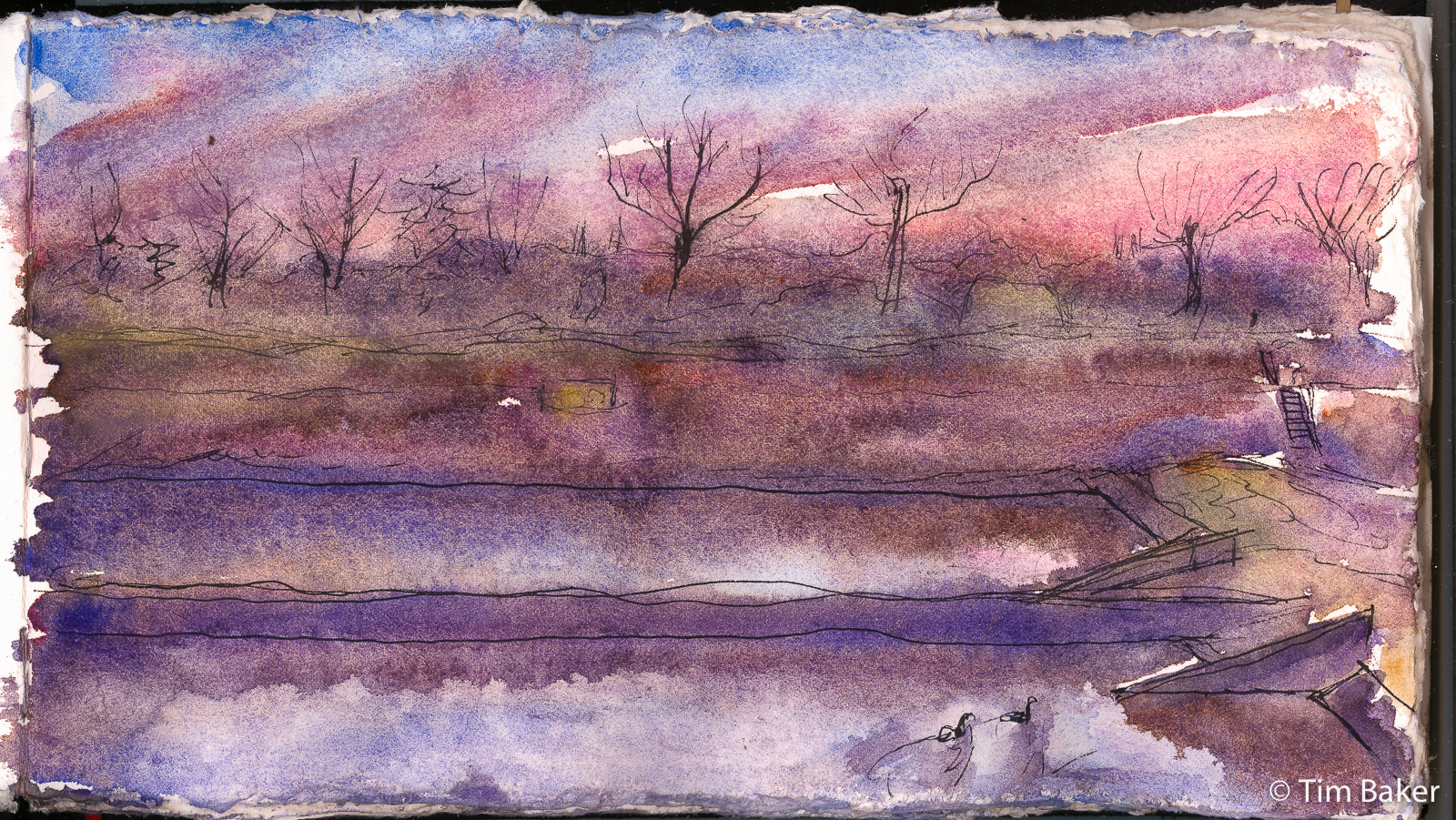
The Seething Wells buildings on the site are mostly listed, this one was being used as a goat shed; again most of the green stuff has been removed, and I’m not convinced they are looking after the building but they have put electricity in – the lights were left on for a long while – wasteful, and the door open for the goats.
I hope the council steps in and makes sure the owner of the Seething Wells filter beds doesn’t let the listed parts fall into ruin, and finds out what they are doing with the beds. They seem to be filling them with gravel, so I’m not sure what they want to do – fishing? I guess free swimming would be out…unless they want to hire it out as a car park, which again would not surprise me, in the kingdom of the car park. So many car parks around here, usually underground or massive high-rises.
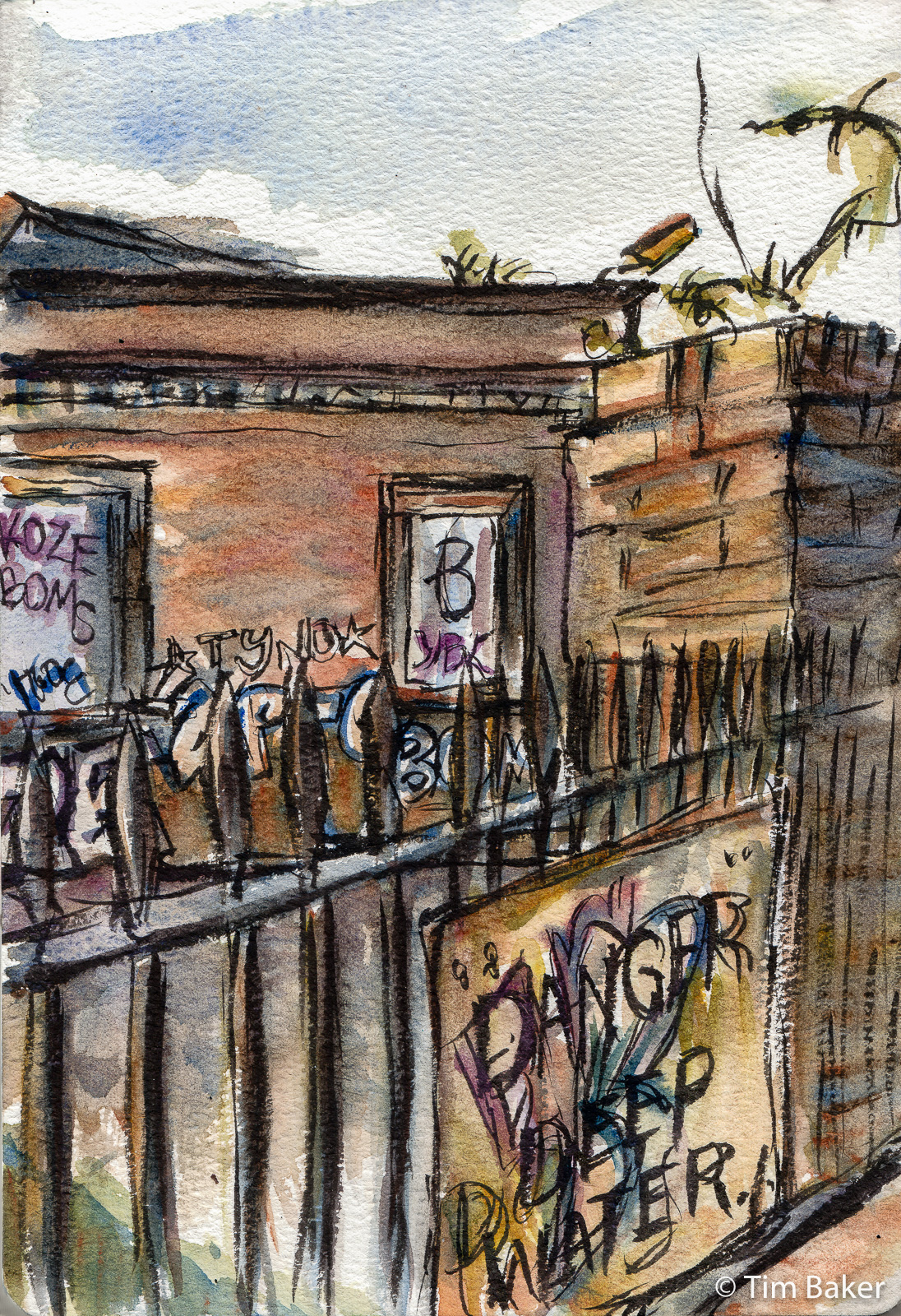
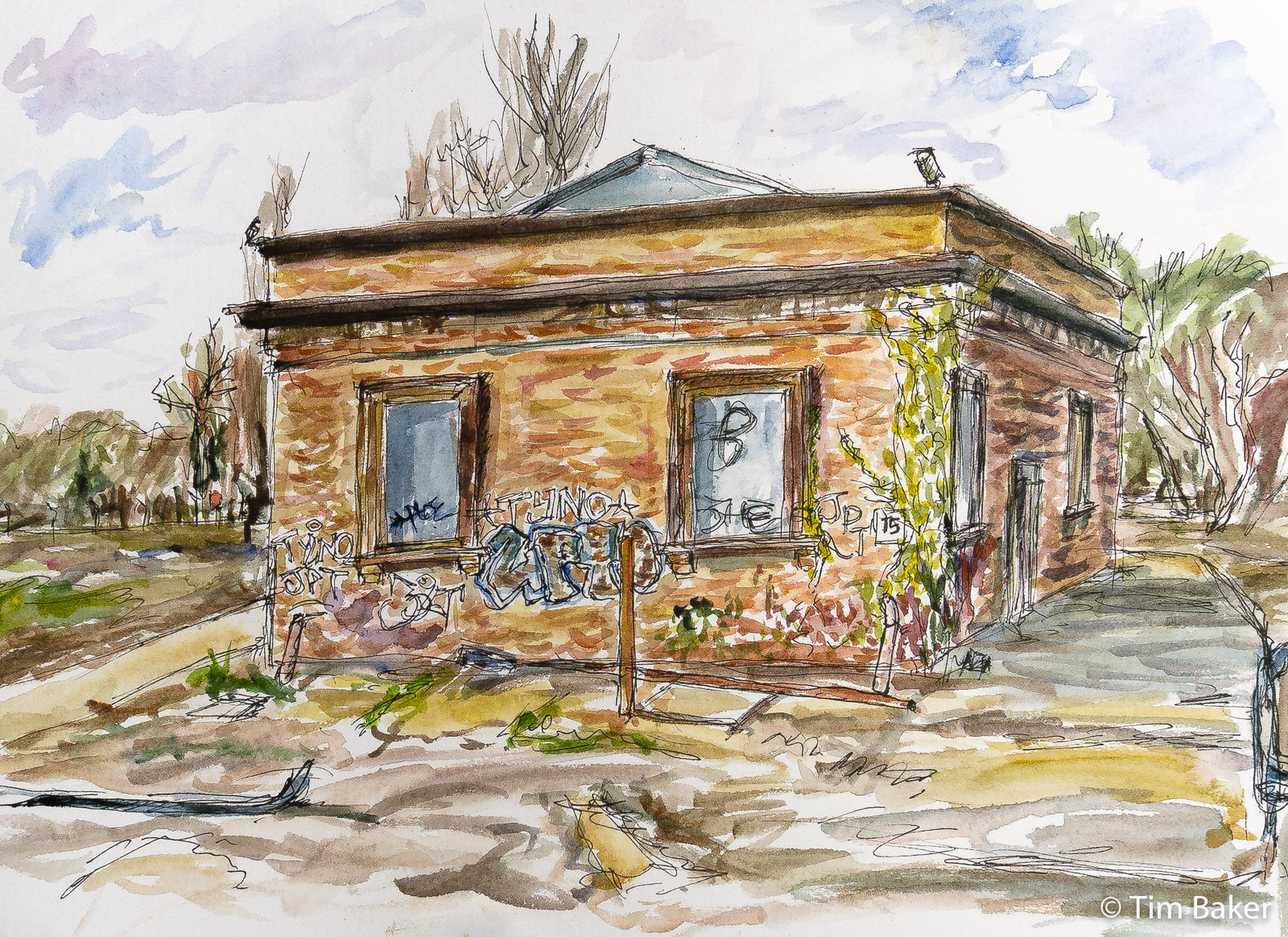
It’s why green spaces and nature reserves are important – if we build on everything, not only do we lose historical Victorian heritage like these filter beds, we also increase risks of flooding, pollution, more cars on the road and more people needing more resources, densifying and heating up the cities until they are unlivable. These spaces are the lungs and flood sponges of London – yes even the wild empty edgelands and abandoned lots, the spaces to let it breathe and for rain water to soak into the ground and pool.
We should not build on every empty lot, otherwise not only does affect how we live in a space like this – our physical and mental health already fractured by pandemic, COVID and the stress of cities, but also our future on this planet.
And there’s also a wider discussion about ‘neatness’ and beauty – I also find it depressing that people think a park with corporation bedding or a golf course is ‘beautiful’ and derelict abandoned places aren’t – when actually, ecologically the latter support far more wildlife, wild plants and animals.
It’s an ideology that says ‘man must order things’ and that man-made things are desirable where nature left to it’s own devices is not. Most golf courses are mostly ecological deserts with very few things that survive the trimming and weedkiller and use far too much water. Highly ordered gardens and parks are likewise, they benefit only a few species, and again weedkiller/fertiliser, lack of diversity and ‘order’ affect the ecology drastically.
I have fought this with our garden, neighbours want it all neatly trimmed with ranks of plants all in ordered fashion…but that’s not good for the plants, the planet or me. We need to get past that idea of tidying and building on everything, and re-wild our places, and allow weeds and other things to grow, because they support a lot of insects and birds that are going extinct. And if the insects and birds go, then we go – we are reliant on the ecosystem to live on this planet.

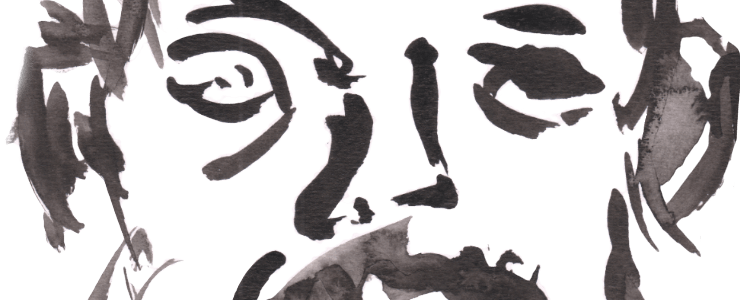

Leave a Comment! Be nice….